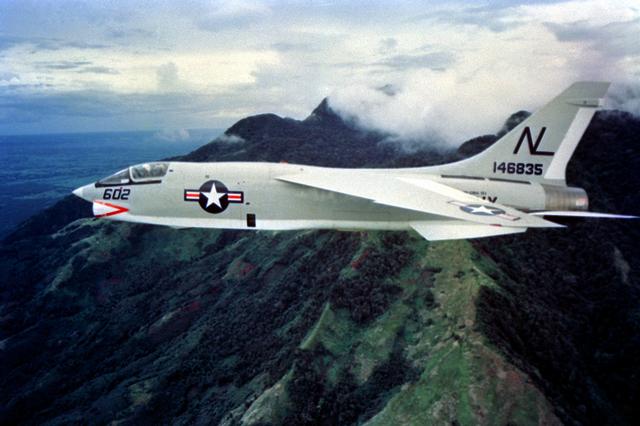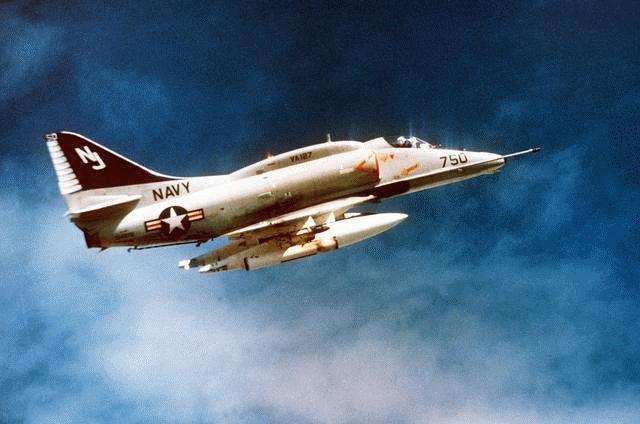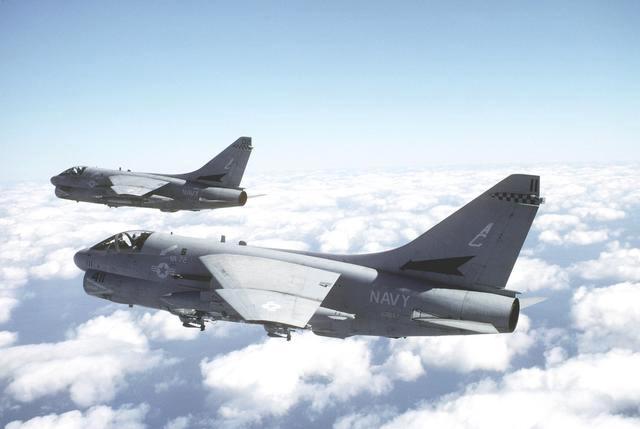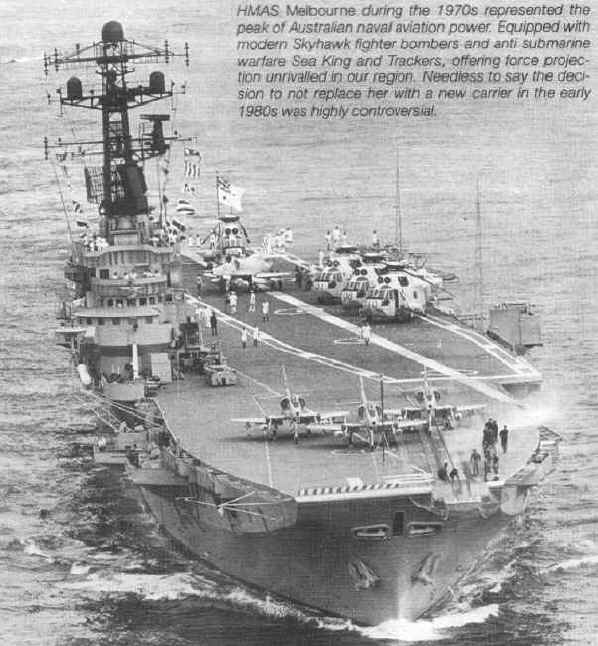The Skyhawk is 34 years old; yet export models are still highly regarded and undergoing modern avionics, weapons, and engine upgrades to maintain their flying prowess into the next century.
The
is currently in service with the Armed Forces of Singapore, Indonesia, Israel, Argentina and Brazil. It was withdrawn from USMC front-line and reserve service in 1992.
Several other countries are also currently considering purchasing surplus USN/USMC Skyhawk's for use in front line service and training and support roles. It is expected that the Skyhawk will remain in service around the world for at least another ten years. The aircraft is also operated by several companies providing flying training and "Adversary or Aggressor" Services to the USN, USAF and other militaries . Early Skyhawks were fitted with a Curtis-Wright J65-W-4 turbojet engine, producing 7800lbs of thrust. Later variants (including New Zealand’s aircraft) were fitted with the Pratt and Whitney J52-P-8A/B/C turbojet, producing 9300lbs of thrust.
An even more powerful variant of this engine, the J-52-P-408 of 11200lbs thrust, was also available and was fitted to most Skyhawks built after 1970. The Republic of Singapore Air Force has fitted a non after-burning General Electric F404 turbofan engine (as used in the F-18) to it’s upgraded A-4S-1 aircraft (modified former USN A-4B’s). In this form the engine produces 10800lbs of thrust, with much better reliability and fuel consumption than the original Curtis-Wright J65 engine.The Skyhawk is capable of carrying literally hundreds of combinations of external stores including fuel tanks, both conventional and nuclear bombs, rockets, and Sidewinder missiles. Armament consists of two 20-mm cannons, one of which is mounted in each wing root.
The Skyhawk has a remarkably low gross weight of 18,311 pounds but can deliver a weapons load of 2,040 pounds at a mission radius of 680 miles with two 300-gallon external tanks; unrefueled ferry range is 2130 miles. Maximum speed of the aircraft is 673 miles per hour (Mach 0.88) at sea level, and cruising speed is 498 miles per hour. Ceiling is just over 40 000 feet. Certainly, the aircraft has an impressive performance for a lightweight attack aircraft.










